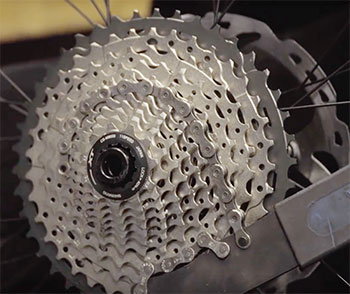Originally Posted by
Newspaper_Nick
I did a google image search and couldn't even find one photo where they use the tool the right way. So i will try to explain. Now when you wrap the chain whip around a larger cog, the tip of the chain is on the loose, like this:

This is an invitation to disaster. As you push down the tool, and the wrench in your other hand, the chain will come loose and you will end up hurting yourself or your cassette. Now imagine if you wrap the chain around to a smaller cog. The tip will actually reach to the handle of the chain whip tool, so that you can rest the handle up against the chain itself. So you will end up with a fully engaged and secure chain. You can push your heart out and it won't come loose.
I think I disagree. Putting the chain whip on the small cog gives you the the lowest possible torque (or at least the highest possible stress on the cog). If you put the chain whip on a larger cog, especially if the cog is part of an assembly (like three cogs riveted together) gives you a better purchase on the freehub.
The scenario suggested indicates an dangerous approach. Any time you are pushing on tools on the opposite side of the hub you risk barking your knuckles on the ground. Don't do that. It always pays to set things up so that the chain whip and the freehub wrench are on the same size of the hub. Set up properly you should be able to break the nut loose by squeezing the two handles together. Alternately, have both arms fully extended, one pushing the other pulling. If the nut breaks loose, you retain control.